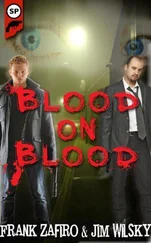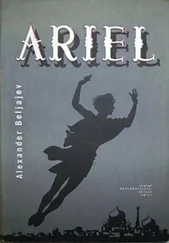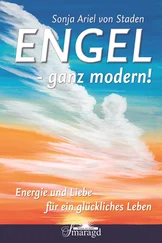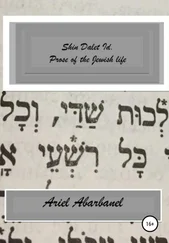Ariel Toaff - Blood Passover
Здесь есть возможность читать онлайн «Ariel Toaff - Blood Passover» весь текст электронной книги совершенно бесплатно (целиком полную версию без сокращений). В некоторых случаях можно слушать аудио, скачать через торрент в формате fb2 и присутствует краткое содержание. Жанр: Религиоведение, на английском языке. Описание произведения, (предисловие) а так же отзывы посетителей доступны на портале библиотеки ЛибКат.
- Название:Blood Passover
- Автор:
- Жанр:
- Год:неизвестен
- ISBN:нет данных
- Рейтинг книги:3 / 5. Голосов: 1
-
Избранное:Добавить в избранное
- Отзывы:
-
Ваша оценка:
- 60
- 1
- 2
- 3
- 4
- 5
Blood Passover: краткое содержание, описание и аннотация
Предлагаем к чтению аннотацию, описание, краткое содержание или предисловие (зависит от того, что написал сам автор книги «Blood Passover»). Если вы не нашли необходимую информацию о книге — напишите в комментариях, мы постараемся отыскать её.
Blood Passover — читать онлайн бесплатно полную книгу (весь текст) целиком
Ниже представлен текст книги, разбитый по страницам. Система сохранения места последней прочитанной страницы, позволяет с удобством читать онлайн бесплатно книгу «Blood Passover», без необходимости каждый раз заново искать на чём Вы остановились. Поставьте закладку, и сможете в любой момент перейти на страницу, на которой закончили чтение.
Интервал:
Закладка:
62
Salomone, in 1441, when he was still called "da Cividale " and not yet "da Piove di Sacco", had set up banks at Verona and Soave, transferring them to Padua in 1442 (cfr. A. Castaldini, Mondi paralleli. Ebrei e Cristiani nell'Italia padana dal tardo Medioevo all'Età moderna, Florence, 2004, p. 59).
63
This is attested to by numerous studies by D. Nissim. Among others, particular attention should be paid to D. Nissim, Nel quinto centenario delle prime stampe ebraiche (1475-1975) , in "Atti e Memorie dell'Academia Patavina di Scienze, Lettere ed Arte, LXXXVI (1975-1976), part III, pp. 43-52; Id., Spigolature di bibliografia ebraica , in A. Toaff, Studi sull'ebraismo italiano presentati ad Elio Toaff , Rome, 1984; pp: 129-155; Id., I primordi della stampa ebraica nell'Italia Settentrionale , cit. 52) The hypothesis, sustained by Nissim ( Famiglie Rapa e Rapaport nell'Italia settentrionale , sec. XV-XVI. Con un' appendice sull'origine della Miscellanea Rothschild , in A. Piattelli and M. Silvera, Minhat Yehuda . Saggi sull'ebraismo italiano in memoria di Yehuda Nello Pavoncello , Rome, 2001, pp. 190-192), is based on the studies of U. Bauer-Eberhardt ( Die Rotschild Miscellanea in Jerusalem: Hauptwerke des Leonardo Bellini , in "Pantheon", XLII, 1984, pp. 229-237), expressing the opinion that the miniatures in Miscellanea Rotschild, currently preserved at the Israel Museum of Jerusalem, were probably executed at Venice in Leonardo Bellini's workshop, and perhaps by the same master. But see L. Mortara Ottolenghi, The Rotschild Miscellany MS 180/51 of the Israel Musem in Jerusalem. Jewish Patrons and Christian Artists , in "Hebrew Studies", British Library Occasional Papers, 13, London, 1991, pp. 149-161. In contrast to Bauer-Eberhardt and Nissim, the illustrious Canadian scholar attributes the miniatures to the schools of two major Christian artists of Cremona, Bonifacio Bembo and Cristoforo de Predis (circa 1460-1480), identifying the client as the Jew Furlano da Cremona, i.e., the banker Mose di Consiglio Sacerdoti. According to Nissim, who believes that he has succeeded in identifying the client as Salomone di Marcuccio da Piove, a resident of Venice; the reason why the latter's name does not appear in the manuscript, where the name of the rabbi Moshè b. Jekutiel Coen Rapa, his protégé, does appear, could be explained by Salomone's sudden and mysterious death, occurring in 1475, when the code was not yet completed (written communication from D. Nissim dated 11 November 2004).
64
The hypothesis, sustained by Nissim ( Famiglie Rapa e Rapaport nell'Italia settentrionale , sec. XV-XVI. Con un' appendice sull'origine della Miscellanea Rothschild , in A. Piattelli and M. Silvera, Minhat Yehuda . Saggi sull'ebraismo italiano in memoria di Yehuda NelloPavoncello , Rome, 2001, pp. 190-192), is based on the studies of U. Bauer-Eberhardt ( Die Rotschild Miscellanea in Jerusalem: Hauptwerke des Leonardo Bellini , in "Pantheon", XLII, 1984, pp. 229-237), expressing the opinion that the miniatures in Miscellanea Rotschild, currently preserved at the Israel Museum of Jerusalem, were probably executed at Venice in Leonardo Bellini's workshop, and perhaps by the same master. But see L. Mortara Ottolenghi, The Rotschild Miscellany MS 180/51 of the Israel Musem in Jerusalem. Jewish Patrons and Christian Artists , in "Hebrew Studies", British Library Occasional Papers, 13, London, 1991, pp. 149-161. In contrast to Bauer-Eberhardt and Nissim, the illustrious Canadian scholar attributes the miniatures to the schools of two major Christian artists of Cremona, Bonifacio Bembo and Cristoforo de Predis (circa 1460-1480), identifying the client as the Jew Furlano da Cremona, i.e., the banker Mose di Consiglio Sacerdoti.According to Nissim, who believes that he has succeeded in identifying the client as Salomone di Marcuccio da Piove, a resident of Venice; the reason why the latter's name does not appear in the manuscript, where the name of the rabbi Moshè b. Jekutiel Coen Rapa, his protégé, does appear, could be explained by Salomone's sudden and mysterious death, occurring in 1475, when the code was not yet completed (written communication from D. Nissim dated 11 November 2004).
65
Cfr. Segre, Cristiani novelli e medici ebrei a Venezia , cit., pp. 388-389.
66
Cfr. Carpi, L’individuo e la collettività , pp. 44-45.
67
Cfr. Ibidem, p. 39. It is important to note that on 25 March 1470, a few months before David Mavrogonato's last voyage, the Serenissima charged Salomone da Piove with effecting, for his account, a loan of 100 ducats to Mavrogonato ("David hebreo de Candia"). The money was to be used by the Candian government to pay the captain of the galleys of Alexandria (ASV, Collegio, Notatorio, reg. 11, 68r). Venice's intention was therefore that Mavrogonato should reach Candia, a location to which he never returned -- probably for good reason -- after the first mission.
68
Salomone da Piove's plan emerges clearly from a petition sent by his son Salamoncino to the Consiglio dei Dieci of Venice dated 9 July 1477. On the Venetian conspiracy against Maometo II, see, F. Babinger, Ja'acub-Pascha, ein Leibartzt Mehmeds II, Leben und Schicksale des Maestro Jacopo aus Gaeta , in "Rivista delgi Studi Orientali", XXVI (1951), pp. 87-113.
69
The famous family of Wallach di Worms, the members of which were, by medical tradition, has left us numerous numerous testimonies, which are particularly far-reaching starting with the early Cinquecento. Cfr. Jewish Encyclopedia , New York-London, 1901-1906, s.v. Wallich (Wlk). The name Valk, Volk, Valke for Falco, Falcone is attested to in the Middle Ages among the Jews of Cologne, Nuremberg and Frankfurt (cfr. A. Beider, A Dictionary of Ashkenazic Given Names , Bergenfield, N.J., 2001, p. 306).
70
Cfr. Babinger, Ja'aqub-Pascha , cit., pp. 106-107.
71
Cfr. ibidem, pp. 90-106; B. Lewis, The Privilege Granted by Mehmed II to his Physician , in "Bulletin of the School of Oriental and African Studies", XIV (1952), pp. 550-563.
72
Cfr. Jacoby, Un agent juif , cit., pp. 76-77.
73
On these events, see Esposito and Qualiglioni, Processi , cit., vol. I, pp. 1-51. Among the defense attorneys acting for the Trent defendants was Antonio Capodilista, one of the most illustrious jurists in Padua (cfr. ibidem, pp. 447-454).
74
Cfr. Nissim, I primordi della stampa ebraica nell'Italia Settentrionale , cit., pp. 12-13.
75
"Salomon [Fürstungar] ivert ad Illustriss. Principem Ducem Austriae [...] et Salomon dixit res male succebat, quia persuasum erat Illustriss. Principi quod deberet pati quod iustitia haberet suum locum et quod, si volebat quod justitia haberet suum locum, erat necesse quod procedatur contra Judeos incarceratos, et hoc ut sciretur an praedicti Judaei incarcerati essent culpabiles vel inculpabiles, et quod si reperirentur inculpabiles relaxarentur, et si culpabiles punirentur. Et quo ex ista ratione Illustriss. Princips noluerunt mandare quod praedicti Judaei incarcerati relaxarentur". ["Salomon [Fürstungar] turned to the Prince Duke of Autria […] and Salomon said that things were going very badly, because the Illustrious Prince was convinced that justice should be done and that, if he wished justice to be done, it was necessary to proceed against the imprisoned Jews, and a determination should be made as to their guilt or innocence, and that if they were innocent, they should be released, and that if they were guilty they should be punished. And it was for this reason that the Illustrious Prince did not wish to release the aforementioned Jews from prison”]. Cfr. [Benedetto Bonelli], Dissertazione apologetica sul martirio del beato Simone da Trent nell'anno MCCCCLXXV dagli ebrei ucciso , Trent, Gianbattista Parone, 1747, p. 145. Bonelli's research, although often invalidated by anti-Semitic prejudice in its conclusions, is always documented and performed with scientific accuracy. See also Divina, Storia del beato Simone da Trento , cit., vol. II, pp. 77-94. "Salomone [Fürstungar] could not be recognized as a Jew because he wore a jacket cut in the German manner and a short cloak and had a German-style cap on his head" (cfr. ibidem, pp. 92-93).
Читать дальшеИнтервал:
Закладка:
Похожие книги на «Blood Passover»
Представляем Вашему вниманию похожие книги на «Blood Passover» списком для выбора. Мы отобрали схожую по названию и смыслу литературу в надежде предоставить читателям больше вариантов отыскать новые, интересные, ещё непрочитанные произведения.
Обсуждение, отзывы о книге «Blood Passover» и просто собственные мнения читателей. Оставьте ваши комментарии, напишите, что Вы думаете о произведении, его смысле или главных героях. Укажите что конкретно понравилось, а что нет, и почему Вы так считаете.












